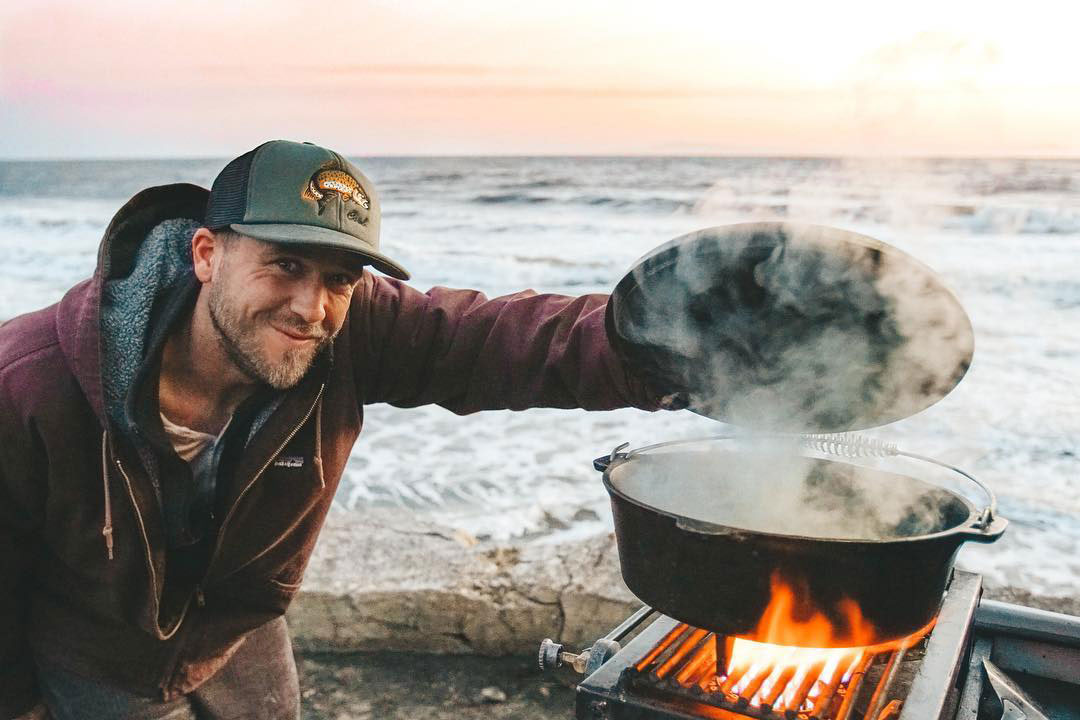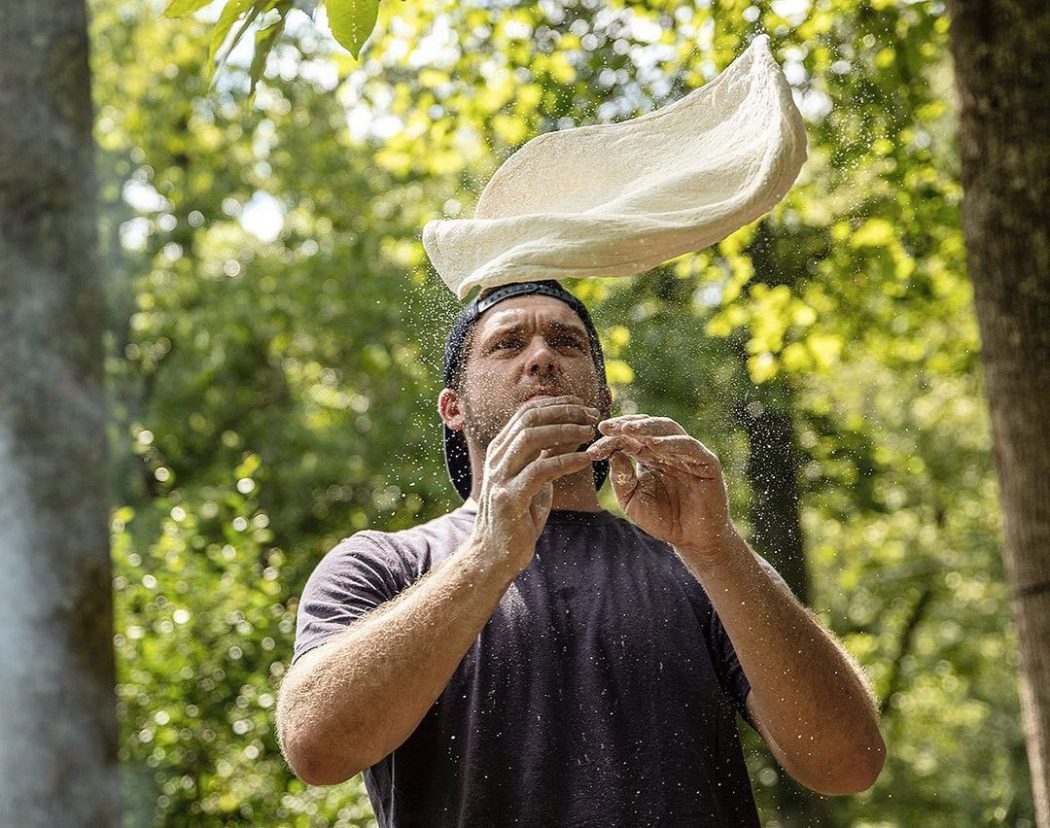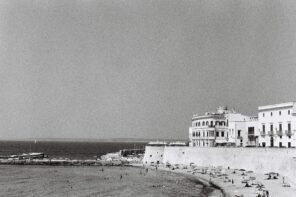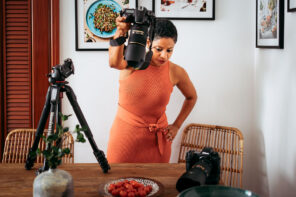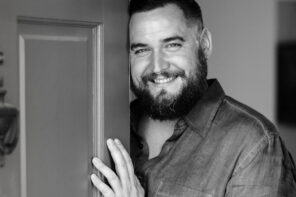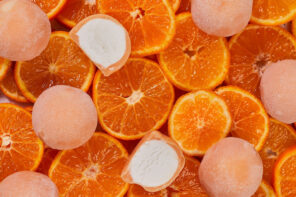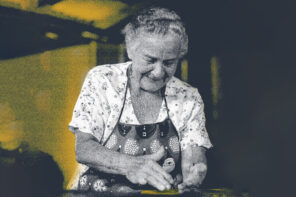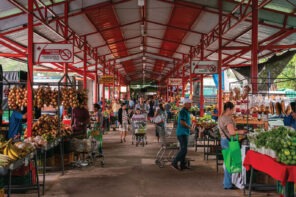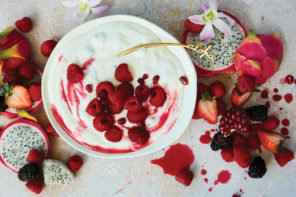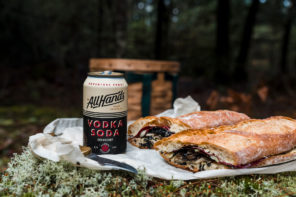Out of the galley and into the fire
After a decade of sautéing his way around the world working below deck some big boats, Chef Adam Glick has taken himself out of the galley and into the great outdoors—a space he might love more than his dog, Tex. He’s teaching people how they can get out of their kitchens and into the wild to whip up some pretty inventive dishes, no matter the time of year. If 2020 has taught us anything it’s to be resourceful (because at any point we can hit another level of Legend of Zelda type setback) and if that means learning how to make a mean at-home fish taco, then so be it.
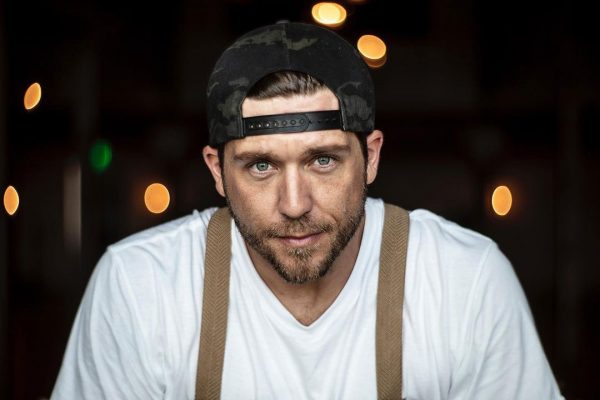
Name: Adam Glick
Hometown: Does the world count? Military brat of sorts. Dozen countries, four high schools, and a partridge in a pear tree.
Profession: Chef and outdoor enthusiast
As Seen On: Bravo’s Below Deck, Outside TV’s Stoked, recent participant in the World Record for most chefs involved in a live TV Show
Current Location: Undisclosed location in a state that rhymes with Shmoregon
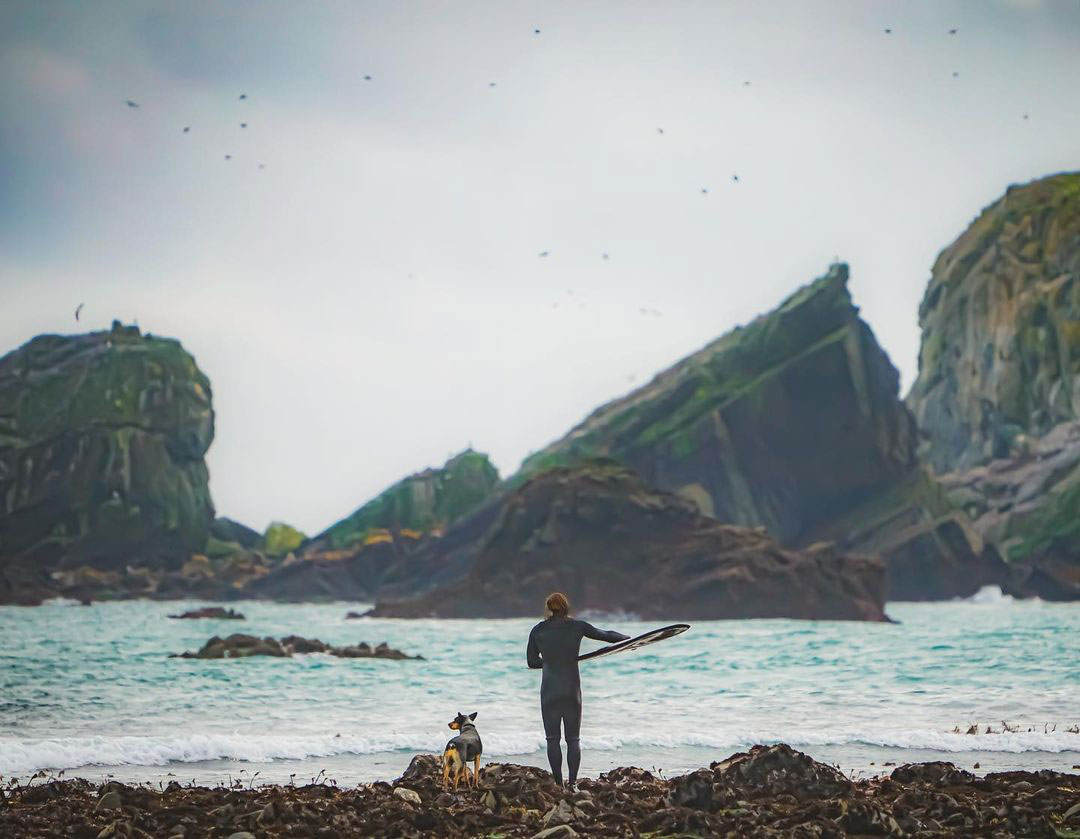
Katy Nastro: So Adam, what led you to cook outside?
Adam Glick: Growing up I had a great affinity for the outdoors. After a decade of cooking inside and looking out at these awesome worldly locations, a fateful trip in the Pacific Northwest involving a trout, some blackberries, a pair of Swedish hikers who helped me make a GoPro video, was the beginning of it all for me. When I was able to feed them the trout and they sat there eating it, eyes rolling to the back of their heads, I realized I could provide a new dining experience no one had ever done, that’s when it all clicked. Secondarily, the cooking I do outdoors inspires me and makes me want to continue to teach because showing people that cooking isn’t difficult has definitely become my passion. If I can do it over a campfire in the middle of the woods with nothing — you can definitely do it with whatever grill you spent 6,000 bucks on.
Katy: What do you think the biggest misconceptions are of cooking outside: I need a charcoal grill, smoker, every cooking utensil Amazon’s got; it’s buggy…etc.
Adam: So obviously people are a little deterred from the idea of cooking outdoors because they don’t have their bare necessities—their running water, a proper oven, etc. But I think what we forget is that a long time ago, we never had these things and we still had to feed ourselves. And that sort of renaissance of cooking, you know bringing back that sort of ancient way of feeding yourself is the basics. It’s the original, OG shit you don’t see or know about anymore. When they introduced microwaves and boxed foods in the ’60s and ’70s that was it.
Katy: Pop Tarts aren’t that bad.
Adam: Haha, I mean, still love ‘em, but look, I think by showing people A) cooking isn’t difficult, and B) you can bring a potato to your campsite, you can bring perishable goods, and it’s not a big deal, all you need to do is just use it and not bring too much. The sky’s the limit.
Cooking and grilling are the same thing: the application of heat. You’ve got two types of food, whole raw food and cooked food. Doesn’t matter how you applied heat (grill, oven, whatever), just did you apply heat or not.
Katy: You can even bring a blender?
Adam: Used to keep a little bullet blender in my van. With the overland community and outdoors industry booming due to COVID-19 especially, the outdoors has never been more comfortable and there’s no reason not to switch it up and use some creativity when packing food for outside consumption. And there are thousands of non-perishables to play with (like hot sauce).
Katy: So people just assume if you’re dabbling with the culinary arts outside it’s going to be grilling, but you can also cook…so what’s the actual difference?
Adam: My answer is no. Cooking and grilling are the same thing: the application of heat. You’ve got two types of food, whole raw food and cooked food. Doesn’t matter how you applied heat (grill, oven, whatever), just did you apply heat or not. There’s countless ways to go about it; it’s just how you go about it that matters. Just like yesterday for example, I thought to myself “Man, I could really go for a bacon sandwich.” So I got out the cast iron, put it onto my grill and got some nice smokey bacon right there. All that mattered though was the application of heat and how I applied the heat.
Katy: Note to self: try bacon sandwiches. So people have been grilling up a storm in most parts of the U.S. due to summer time, but with the pandemic also still looming, going out to dinner isn’t high on many priority lists. How can someone get more comfortable with grilling, or working with fire (in the safest way possible).
Adam: I think my best advice for people looking to cook with an open flame is…don’t cook with an open flame. If you’re going to grill with coals, work with the hot coals, not the flame.
Katy: Just buy coals and fire away? Or do we need the Kevin McCallister lighter fluid as a starter.
Adam: Yes, you do need a starter, and hey you can even use hand sanitizer—we’ve got a lot of that laying around! Essentially coals you buy are just burnt wood that hasn’t been burned all the way, so light them up and let them heat up a bit. To tell if they’re ready, you shouldn’t be able to put your hand anywhere near it and the coals should be white ash—not grey ash because that means they’ve gone cold. If you’re creating a campfire, let it burn down to create your own coals. And please do this when it’s not in a high risk fire zone.
Cooking and grilling are the same thing: the application of heat.
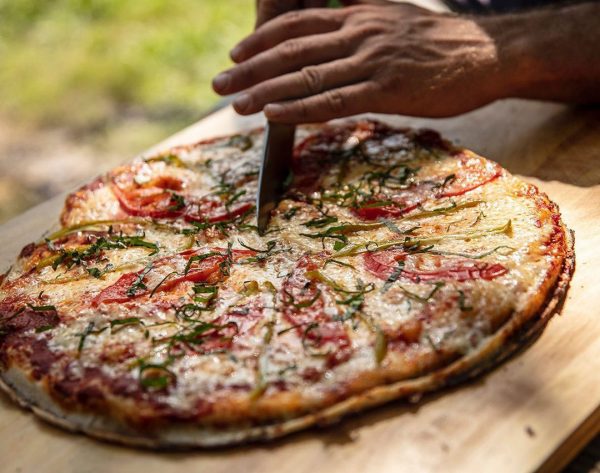
Katy: If people wanted to learn more about cooking with coals vs. wood, where would you point them?
Adam: There’s a guy named Francis Mallmann. He doesn’t speak a word of English, so you won’t learn anything orally, but visually—he’s my role model for sure.
Katy: Can you actually cook on a firepit or bonfire? What is something you can make besides s’mores and hotdogs? And no, sausages don’t count since it’s a hotdog with a different coat on. We want to get people thinking outside of the box of tubed meat.
Adam: Let’s face it. No one’s going to stop putting a stick in a hotdog and shoving it in the fire. I’m not suggesting you stop doing that, but what I’m suggesting is maybe you buy yourself a tri-tip, or a couple ribeyes, or even some artichokes to ramp it up. You need to start cooking with coals so you can do temperature control. Stop burning your hands; save the hair on your arms, and start moving coals around whatever cooking apparatus you choose (grill grate, cast iron on top of that). Wolf and Grizzly make a great little lightweight outdoor grill that is exactly what I’m talkin’ about.
But let’s also say you don’t have a grill. Get your fire going with logs or coals, whatever you have, and just pull one section away and put your pan right on top of that. Sky’s the limit of what you can make. Go out there and cook whatever you want but all you have to do is apply heat and you’re basically in a kitchen. Just go for it!
Katy: So if we wanted some additional tools, should we pick up an Adam Glick outdoor chef knife?
Adam: For sure. A couple years back I decided to create a knife (and chef kit) that was inspired by pocket knives and ergonomically designed to help the outdoor chef. Fully foldable cookery. I basically took the four things I can’t cook without and made them foldable.
Katy: What’s your favorite outdoor venue in the states to cook within?
Adam: Oh, the Pacific Northwest, no question. The availability of my favorite foods like wild, delicious salmon; all types of seafood, oysters, mussels, clams, blackberries, raspberries, and mushrooms out the wazoo. I love that it provides and everything grows up here so well. And the people growing and supplying are just some of the nicest people I’ve ever met.
Katy: Favorite thing to cook / eat? Best outdoor dish?
Adam: Definitely a steak kind of guy, but I’m really digging artichokes on the grill right now.
